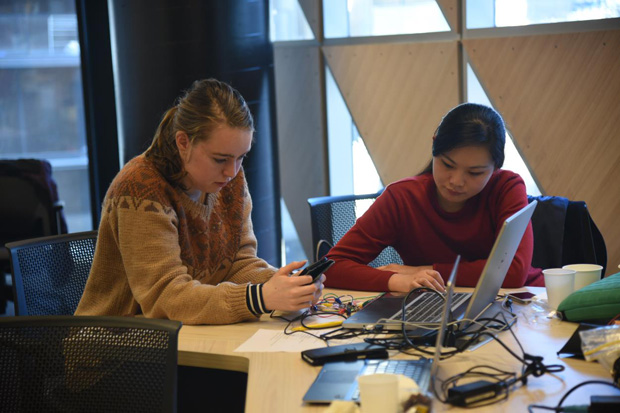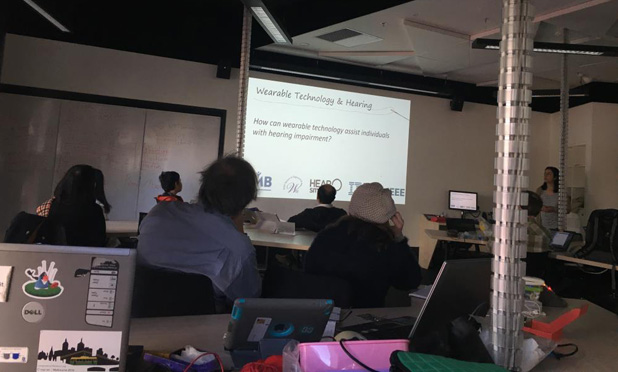On Saturday 17th September, the Engineering in Medicine and Biology Society (EMBS), Women in Engineering (WIE) and RMIT University WIE held a e-sewing/wearable technology hackathon with a focus on assisting individuals with hearing impairment and preventing hearing loss.
The event began with a presentation on the issue of hearing impairment and its prevalence. A number of ideas were then presented to participants. These included using smart phones to translate spoken word into text in real time, devices to sense approaching cyclists and those that could alert deaf carers to the sound of a baby crying or simply a doorbell. Another idea suggested by the Hearing Cooperative Research Centre’s HEARsmart project was a device to record and display information about sound levels being experienced to prevent noise-induced hearing loss. Several demonstrations had been prepared. One was a presentation on IBM’s Bluemix platform which showed how voice-to-text recognition could be done using this platform. Another was the use of Bluetooth communication between a smartphone and one of the microcontrollers used.
Components used were the LilyPad Arduino and Adafruit sewable microcontrollers and a number of parts including sensors, LEDs and Bluetooth modules that can be used to experiment with wearable technology designs. The Adafruit Circuit Playground which is a board with a number of built-in sensors and LEDs, was also used.

A diverse range of 18 participants took part in the hackathon. These included students, engineers, hobbyists and IEEE volunteers from other Chapters. An attendee in our previous events brought along his wife and two children and together they took part as a team getting familiar with the electronics and coding.
Generous prizes were sponsored by HEARsmart and awarded to two designs. First place went to a group of three designers, Harmony Yu, Alice Todd and Daysi Ruvalcaba who used a sewable Bluetooth module to send an alert to a carer’s smartphone with the sound of a baby crying. Second went to Stefan Burger who worked on a device that could display information about exposure to accumulating sound. HEARsmart may pursue discussions with the winner about how this may be further developed for real world use.



